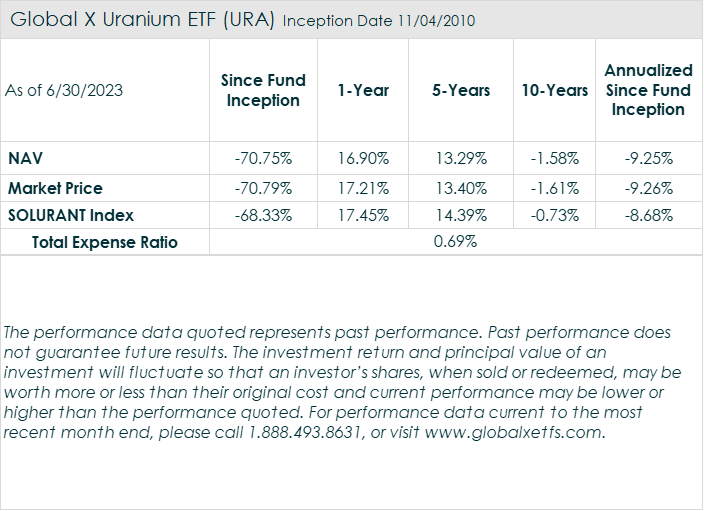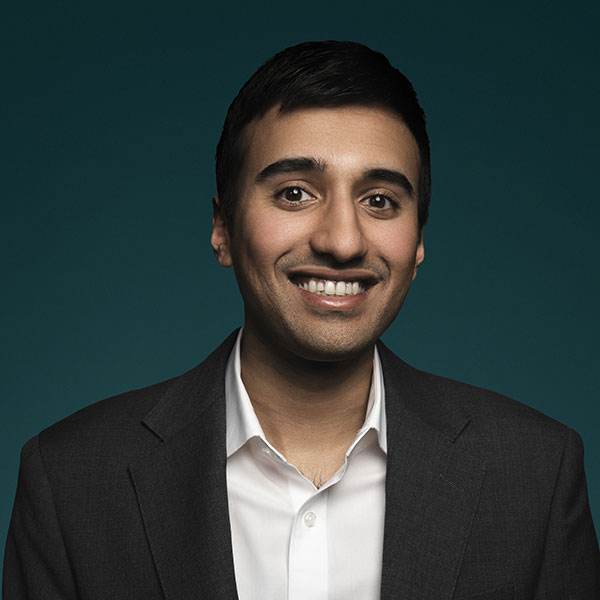The Q2 2023 Uranium Quarterly Report can be found here, offering insights on nuclear and uranium news and performance of the Global X Uranium ETF.
Key News of the Quarter
- India is reviewing its atomic energy law. The law governing atomic energy in India is currently under review to let private enterprises into the state-controlled nuclear industry.1
- Canada is returning to nuclear power after a 30-year pause. To satisfy the spike in demand, in addition to enlarging an existing plant to become the largest in the world, Ontario plans to construct three compact modular reactors on the same site where another is being constructed.2
- Pakistan and China sign $4.8 billion nuclear power plant deal. The deal to build a 1,200-megawatt nuclear power plant. The Chashma 5 project will be developed in the heart of Punjab. Pakistan’s transition away from dependency on fossil fuels will be aided by China’s cooperation.3
- Turkey aims for 20 GW of nuclear by the mid-2050s. Turkey is in discussions with the USA, UK, and China for small modular reactors (SMRs), as well as with Russia, China, and South Korea regarding its second and third nuclear power projects.4
- US aims to accelerate deployment of new nuclear. The Accelerating Deployment of Versatile, Advanced Nuclear for Clean Energy (ADVANCE) Act of 20235, put forth to the US Senate by a bipartisan group, seeks to support initiatives to develop and deploy new nuclear technologies at home and abroad through actions like facilitating the repurposing of conventional energy sites and providing regulatory support for the deployment of advanced nuclear technologies.
- France commits more than €100 million to reviving the nuclear industry. France’s Ministry of Energy Transition invested over €100 million ($108 million) in civil nuclear training, research, and innovation. This follows President Emmanuel Macron’s February 2022 “rebirth of France’s nuclear industry” and October 2021 “France 2030” investment plan.6
- UK aims to increase energy security with nuclear energy. The UK is looking to boost energy security with small modular reactors (SMR) by hosting Great British Nuclear, an international competition for innovation in SMR technology and creating new types of nuclear bodies.7
- Sweden is looking to triple nuclear power. Sweden needs to triple nuclear power capacity over the next two decades to fulfil rising electricity demand. The government’s power strategy relies on new nuclear facilities.8

For performance current to the most recent month- and quarter-end, please click here. The Fund’s investment objective and investment strategies changed effective May 1, 2018 and again on August 1, 2018. Hybrid index performance (noted as “SOLURANT Index” above in the chart) reflects the performance of the Solactive Global Uranium Total Return Index through April 30, 2018, the Solactive Global Uranium & Nuclear Components Transition TR Index through July 31, 2018, and the Solactive Global Uranium & Nuclear Components Total Return Index thereafter.
DEFINITIONS
Solactive Global Uranium & Nuclear Components Total Return Index: The Solactive Global Uranium & Nuclear Components Total Return Index tracks the price movements in shares of companies which are (or are expected to be in the near future) active in the uranium industry. This particularly includes uranium mining, exploration, uranium investments and technologies related to the uranium industry. The Index will include a minimum of 20 components at every rebalancing.
 Rohan Reddy
Rohan Reddy